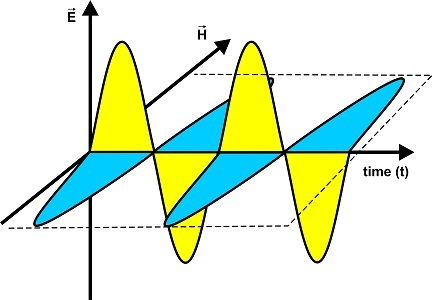Electromagnetic fields
In the extremely-low and low frequency ranges, the electric fields and the magnetic fields of a source must be considered separately. The higher the frequencies are, the closer these fields are linked or "coupled" to each other and are then considered as an electromagnetic field. However, the electromagnetic field has an electric and a magnetic field component. In the radiofrequency range, from a frequency of about 30,000 Hz (30 kHz) electromagnetic fields can “detach” from their source (e.g. an antenna) and freely pass through the room over long distances with the speed of light (about 300,000 kilometers per second). This property is used to transmit information, e.g. broadcast, television, mobile communication, and wireless data (see also Man-made radio frequency fields).

The power flux density S of the electromagnetic field consists of energy fractions of the electric and magnetic field components and is measured in watts per square meter (W/m2). The field strength decreases with increasing distance from the field source.
In a frequency range between 100 kHz and 10 GHz the specific absorption rate (SAR) is commonly used to describe the energy of the electromagnetic field that is absorbed in biological tissue and there mainly converted into heat. The SAR is given in watts per kilogram of tissue (W/kg) and averaged over six minute exposure intervals in appropriate measurements or simulations. During this interval, a balance between the energy input and the heat dissipation in the tissue has been reached. By averaging over different body masses a distinction between the exposure of the whole body or parts of the body (e.g. the eye only) can be made.